Prime Minister Narendra Modi of India, in an interview on the eve of his visit had likened the unanimous ratification of the LBA and its Protocol by the Indian Rajya Sabha and Lok Sabha to the fall of the Berlin Wall. How relevant is this analogy? The Berlin Wall, constructed in 1961 was not just a wall that encaged West Berlin within the then East Germany but also cut off the city from West Germany, and represented in an iconic manner the East-West divide in Europe. Its demolition in 1989, literally by peoples on both sides of the Germanic divide, therefore not merely depicted the demolition of a brick-and-mortar structure that separated peoples but also, more importantly, the demolition of the walls created within the minds of a the German people, and heralded the end of the regime that had for over a quarter century posited that the ideological divide was literally carved in stone and was forever immutable. In a sense, the demolition of the Berlin Wall was also a forerunner of the process that resulted in the “reunification” of post-War Europe through the dramatic enlargement of the European Union.
If one takes into account that the Partition of the historical India-subcontinent on the eve of its independence from British Colonial rule on August 14, 1947 was also through the drawing of a line across a map that had hitherto represented a single geo-political landmass for millennia, and that post-Partition the strident divisive nationalist jingoism actually fortified the walls that were built within the mind-sets of the new nations so created (which were far stronger and more impermeable than the lines on the ground), the analogy drawn by Mr. Modi is not at all as far-fetched as sceptics would wish it to be. When many in India, Bangladesh and elsewhere in the sub-continent had come to believe that border issues spawned by the Radcliffe Award that marked the Partition could never be resolved, the ability of negotiators not only to arrive at the final agreement, and of Parliaments in both countries actually managing to get it ratified, with disparate voices from right to left of the political divide coming on the same platform and voicing support, is a monumental shattering of a glass ceiling of sort. It demolishes a tenaciously held myth by many that problems between India and its partitioned neighbours could never be resolved. The mind-set that this event demolishes is perhaps far more important than the barbed-wire fencing that has been put on the ground reflecting the sheer difficulties on the ground in managing a vastly porous border whose lines were fuzzy and unclear to many on both sides. I view this as prizing apart the hitherto very narrowly defined space of mutual comfort and trust through fragmentation of the mind-set of yore that had bedevilled bilateral relations between the two neighbours, as also the beginning of a process that may, yet, ultimately make the fence irrelevant. I see Prime Minister Modi’s visit to his perhaps most important neighbour in the eastern flank of India as replete with significance and promising opportunities of mutual benefit to both and the region.
How was Mr. Modi able to push through the Constitutional Amendment Bill 100 ratifying the LBA and Protocol thereto so unanimously in both Houses of Parliament, that even a couple of days earlier had appeared likely to flounder when recalcitrant allies and elements of his own party had wanted to leave Assam out of it? Mr. Modi deserves far more credit than his critics are loathe to concede to him. Let me assert here, Indian foreign policy formulation and practice has historically been based upon wide bipartisan consensus on most important issues, particularly to those relating to neighbours. As an active participant and negotiator on the ground at the time when this accord was being finalised, I can unequivocally assert that this bipartisan consensus on the LBA was there even when the Agreement was signed in September 2011. However, the LBA-2 government was a relatively weaker coalition than the LBA-1, and the tendency of its smaller coalition partners succumbing to play regional or local issues with electoral politics in mind made the ratification process, already complex in India’s federal structure increasingly more difficult as the country moved forward to successive state and national general elections. The government of the day was committed to the ratification, but was simply not able to manage the politics adroitly. When Mr. Modi was elected to power so convincingly in May 2014, found that even though his party (also a “coalition”) dominated the lower house with absolute majority was outnumbered by the parties in opposition in the Upper House. In the event, since the Bill tabled by the Congress-led UPA-2 was still alive, but dormant, in the Rajya Sabha, Mr. Modi brilliantly played smart politics to turn the situation in his favour. He listened carefully to all voices in India and Bangladesh, and when it appeared quite evident that the piecemeal method advocated by some of his allies risked losing for India whatever credibility and trust that had it had been able to build to date so painstakingly in Bangladesh, he over-rode his allies and gave pre-eminence to India’s broader strategic goals of opening up economically to the east that required Bangladesh as an active and integral partner to his “Act East” initiative. Realist as he is, he understood that West Bengal supremo’s demand for monetary compensation had to be met in acceptable measure. He also understood that it was necessary to assuage the enormous ego of the West Bengal Chief Minister to get her on board both on the LBA and Teesta accord. For this, while delegating this task to his senior-most ministers (External Affairs Minister Shushma Swaraj, Home Minister Rajnath Singh and Finance and Corporate Affairs Minister Arun Jaitley) to reason with Ms. Mamata Bannerjee, he also reached out to her personally. This was in sharp contrast to the UPA-2 government handling that had fallen abysmally short in Ms. Bannerjee’s perception on both counts. (She may also have looked askance at Bangladesh’s egregious treatment of her in 2011 by not inviting her to make a stand-alone visit when she had on several occasions indicated that she was keen to do so, and instead inviting her in September 2011 to share the limelight with four other Chief Ministers, of Assam, Meghalaya, Mizoram and Tripura respectively, accompanying Prime Minister Manmohan Singh during his visit.) While we all welcome Ms. Bannerjee now having come aboard on the LBA, it appears as of last reports that she has still not relented on her previously publicly stated position on the Teesta agreement. Bangladeshis may perhaps not be unjustified in feeling that while their own Prime Minister did, in actuality, treat Ms. Bannerjee as a sister in trying to accommodate her on the issue as far as practicable without sacrificing Bangladesh’s interest on account of her political compulsions in 2011, the latter had not reciprocated this sisterly gesture in full measure. One can only hope that Ms. Bannerjee will now juxtapose her apparently inflexible position to date against the benefits to be gained from addressing the larger picture and yet still e persuaded to relent at the last moment, in a gesture of pulling out of the hat a surprise gift for her Bangladeshi neighbours and well-wishers!
Mr. Modi had made it abundantly clear immediately after his landslide victory in the 2014 elections that gave him such a massive mandate that he was going to pursue a “neighbours first” policy, placing his immediate South Asian neighbours in the inner core of a several concentric circles of relations. Mr. Modi also announced a laudably ambitious goal for himself and his new government immediately after the elections: that he would endeavour to make the 21st century India’s century. If anything, this one enunciated goal and subsequent actions would indicate a number of things: that he was quite clear that he was in for the long haul and not just for one term; and that in order to be able to do that, he would privilege India’s broader strategic interests over the more narrowly defined ideological-parochial interest of some within his own party or his close allies in order effectively to demonstrate that he was truly Prime Minister of all Indians. To be able to thrust India to the forefront on the global stage, he also demonstrated convincingly that he was no amateurish country bumpkin in diplomacy but a shrewd realist who could hold his own at rubbing shoulders with the most powerful and influential of world’s leaders today. Above all, when the totality of his enunciated goals and regional goals are viewed together, they are eerily reminiscent of the late Mr. Deng Xiaoping’s goals and strategy after he assumed power in 1979, when he had enunciated that he would make the 20th century China’s century, to do which he launched his “four modernizations” program for China’s economic development and growth but which could only be achieved by underpinning those goals on the bedrock of two foundational prerequisites – “stability at home and peace with neighbours” (China at that point of time had adversarial relations with practically all neighbours except North Korea). Mr. Deng was able to achieve spectacular success on both counts by 1990, and thereafter was able to totally concentrate all efforts, energies and resources to catapult China into transforming into the second largest economy of the world with outstanding growth performance and the powerful country it is today.
Mr. Modi has similar development goals, and he wasted no time in publicly signalling his outreach intentions, particularly to his immediate SAARC neighbours. But lofty goals notwithstanding, Mr. Modi is a pragmatic realist. He has made it abundantly clear that while he would wish to give a fillip to the entire SAARC process, some sub-regions of SAARC might be more amenable to moving forward than others. This was demonstrated by the pattern of his first bilateral regional visits in South Asia. He visited Bhutan first, with whom India has the best of relations, no problems and from whom India will obtain 10,000 MW of hydro-power (Bhutan has latent capacity of generating between 23,000 -27,000 MW, of which Mr. Modi would surely want to get more). He then visited Nepal which had for too long been neglected by India, to reach out to its people and leadership and kick-start relations and projects that had gone into hibernation for over 2 decades. Mr. Modi’s personal magic touch have effectively assuaged that resentful feeling of overbearing neglect. His visit to Sri Lanka also served to restore the bonhomie that had seen some jarring jolts in the latter part of President Rajapakse’s term. People in Bangladesh and India may therefore be excused for enquiring why he was delaying his visit to Bangladesh. Mr. Modi astutely recognized that he could only visit Bangladesh when he was in a position to deliver in full or partial measure the commitments already made by India earlier and frozen in the pipeline. He understood only too well that a visit only with promises to “soon deliver on promises” would not only go down badly but could well result in an erosion of the capital accumulated to date, and also create further domestic problems for a friendly government in Bangladesh. Above all, his efforts at establishing regional credibility that are essential for his larger strategic goals would have taken a palpable hit in the process. By settling the LBA issue so deftly and convincingly, Mr. Modi may well have had something more in his mind – he could carry on his visit to China the model of how a long-festering border issue had been resolved between India and one of its three neighbours with whom it had the largest borders, demonstrating that given political will and determination to resolve problems, even the most intractable of long-festering issues could be resolved amicably and to mutual benefit.
It would be pertinent to remember here that the LBA was almost not signed during Dr. Manmohan Singh’s visit because of the sense of affront that many in the Bangladeshi leadership felt when the final conclusion of the agreed upon draft Teesta accord, having been initialled by the Water Resources Secretaries of the two countries, was aborted by the Indian side. Over the last three years I have repeatedly and unwaveringly asserted to skeptics that the LBA would ultimately be ratified by the Indian Parliament, and on May 6and 7, I was vindicated in my conviction. Today, I remain equally confident that the Teesta Accord too will happen, sooner rather than later (if not during the forthcoming visit itself).
With at least one (the more important in my personal view) resolved, Bangladesh should now be prepared to assume fully its role as hub of connectivity, by river, rail, road and air for which it is uniquely positioned, not only between the Indian mainland and its North-eastern states, but between the whole of India and east Asia. I recall that in one of her earliest pronouncements after being elected to power in 2008, Prime Minister Sheikh Hasina had asserted that she “wanted her rivers and waterways back”. This, I believe, was not merely a sentimental declaration aimed only at cleaning up badly polluted rivers, but a recognition that by ignoring our rivers and concentrating only on roads and highways (very difficult to maintain during the best of climatic conditions), Bangladeshi planners had ignored and gone against the very geo-morphology of the terrain that defined the country, and indeed the lives of its people. Mr. Modi also believes, just as passionately as Prime Minister Sheikh Hasina does, that our rivers have to be rejuvenated and restored, and Mr. Modi has already directed that India must develop in earnest national waterways as assiduously if not more as it had to date poured in resources for developing national highways. Restoring the waterways would enable far more goods and human traffic to be transported across these waterways, (and far cheaper and for much longer distances per unit fuel or money); and restoration of the waterways would also revive in the process upstream and downstream activities that had described the way of life historically for the peoples inhabiting its many river basins, as well as significantly reducing the carbon footprint of the country.
There is now, therefore, a significant confluence of visions and interests as well in both the countries, in respect of how water bodies should be holistically and better managed bearing in mind the heavy environmental and ecological price that all have paid by ignoring the growing water crisis. Bangladesh and India can both work towards linking up their respective national waterways and expand it to assume sub-regional dimensions, by facilitating, directly or by developing nearby hubs for freeing Bhutan and Nepal from their land-locked situations. Both would need to develop communication infrastructure in harmony with each other and always keeping the larger goal of connectivity regionally for economic development of all. Both should also seek to break out from remaining hostage to Benapole-Petrapole and Akhaura-Agartala being the two principal gatewways for trade. While Dawki-Tamabil is in the process of upgradation, some more points facilitating more direct north south movement (like the present grossly inadequate Changrabandha-Burimari, Banglabandha-Fulbari, and Nakugaon-Dalu points) should be made user-friendly and more meaningfully operational, that would immensely benefit Bhutan and Nepal as well. Bangladesh would also do well to reviving seriously its own Ganges barrage project (on which the Ganges Treaty of 1996 was predicated) so that it comes out of a perpetual dependency situation, and seek Indian collaboration/assistance in realizing this project.
Bangladesh and India also succeeded in doing something that was summarily dismissed by Bangladesh some seven or eight years ago when offer of electricity from India in return for giving it passage of over-dimensional cargo from West Bengal to Tripura to enable construction of a 1100 MW gas-based power station was summarily rejected (one was told that the irrational rationale for the rejection of that offer was that Bangladesh did not need “hindu” power). Well Bangladesh is not only purchasing these non-denomenational electrons to the extent of 500MW, but has linked a point in its western grid with India’s eastern grid, and the two sides are figuring out how to cope with the sudden whetting of appetite for this power. India, in January 2012, had made public its offer to Bangladesh to acquire equity (to the extent of 100% if it so wished) in any power project anywhere in India. Energy security is required to fuel the South Asian industrial revolution to lift its teeming millions (40% or more of its total population) out of the morass of poverty. This Increasing cooperation in the energy and power sector is an area that offers numerous win-win scenarios. India’s Northeast has latent hydro power of over 70,000 MW, but it can evacuate at the most only about 10,000 or 15000 MW through the narrow and difficult terrain that is its “chicken neck”. So no significant investment has been made in the power sector in the North-eastern states. Bangladesh could enter into joint or sole investments, in hydro and other modes of power generation and also offer evacuation through Bangladesh in return for a sizeable quantum of that power being dropped in Bangladesh. In return, Bangladesh needs Indian approval for evacuation of hydro-power (of 10,000 MW at least, should we so desire, from Bhutan alone) from Bhutan and Nepal. This would ensure our medium and long term energy security, and also put in place the architecture for regional energy security – the key to development and prosperity. If the government or the private sector of India is willing to enter into joint venture projects with Bangladesh towards our mutual energy security, we should certainly grasp it.
The prospects of the two countries further deepening and broadening their existing cooperation and collaboration, and expanding them progressively to embrace the region, whether in South Asia itself or beyond to the east, are immense. Whether, and to what extent, progress can, or will be made are dependent on one single factor that looms large over everything else – deeply entrenched mind-sets, perhaps more now in the smaller neighbours than in India that is today a far more self-confident nation than it was say a decade or two earlier. The baggage that we have is our unfortunate legacy from the cataclysmic Partition of 1947, and of that post-colonial aberrational phenomenon called the Cold War which subsumed so many of the world’s discourses in the last half century and whose spectre still casts a dark shadow on many present-day discourses, keeping alive still the spirit of discord and malevolence in bits and parts. To overcome this, history has to be perceived as such, history to draw lessons from, not to imprison ourselves in a time warp. While it becomes imperative for the strong and large to be more generous and sometimes even to appear to be self-effacing to give the smaller and weaker the sense of secure space and trusting comfort, it is equally incumbent on the latter to lower their guards that are frozen in perpetual belligerence of self-defence and more often than not loathe to recognize the moment when a good offer is being made, and accept the hand offering that. Such a moment is now upon us, which bodes well for our bilateral relations as well for regional economic integration – at least in the eastern BBIN (Bangladesh-Bhutan-India and Nepal) sub-region of SAARC. Let us seize it. Let us demonstrate, to ourselves and the rest of the region, that there is nothing to fear but fear itself, and nothing succeeds like success!
Ambassador Tariq Karim was High Commissioner of Bangladesh to India from August 2009-October 2014. He had earlier served as Deputy High Commissioner to New Delhi (July 1984-August 1988) and as Additional Foreign Secretary of Bangladesh for South Asia and SAARC (March 1995-March 1997). He is currently Advisor to the World Bank on South Asian Regional Integration and concurrently Distinguished Fellow in the Vivekananda International Foundation, New Delhi.
Published Date: 9th June 2015, Image Source: http://thewire.in

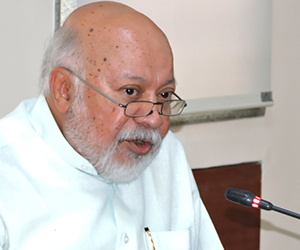

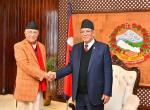
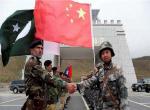

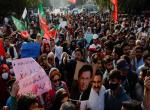
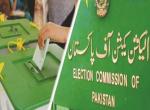
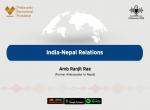

Post new comment